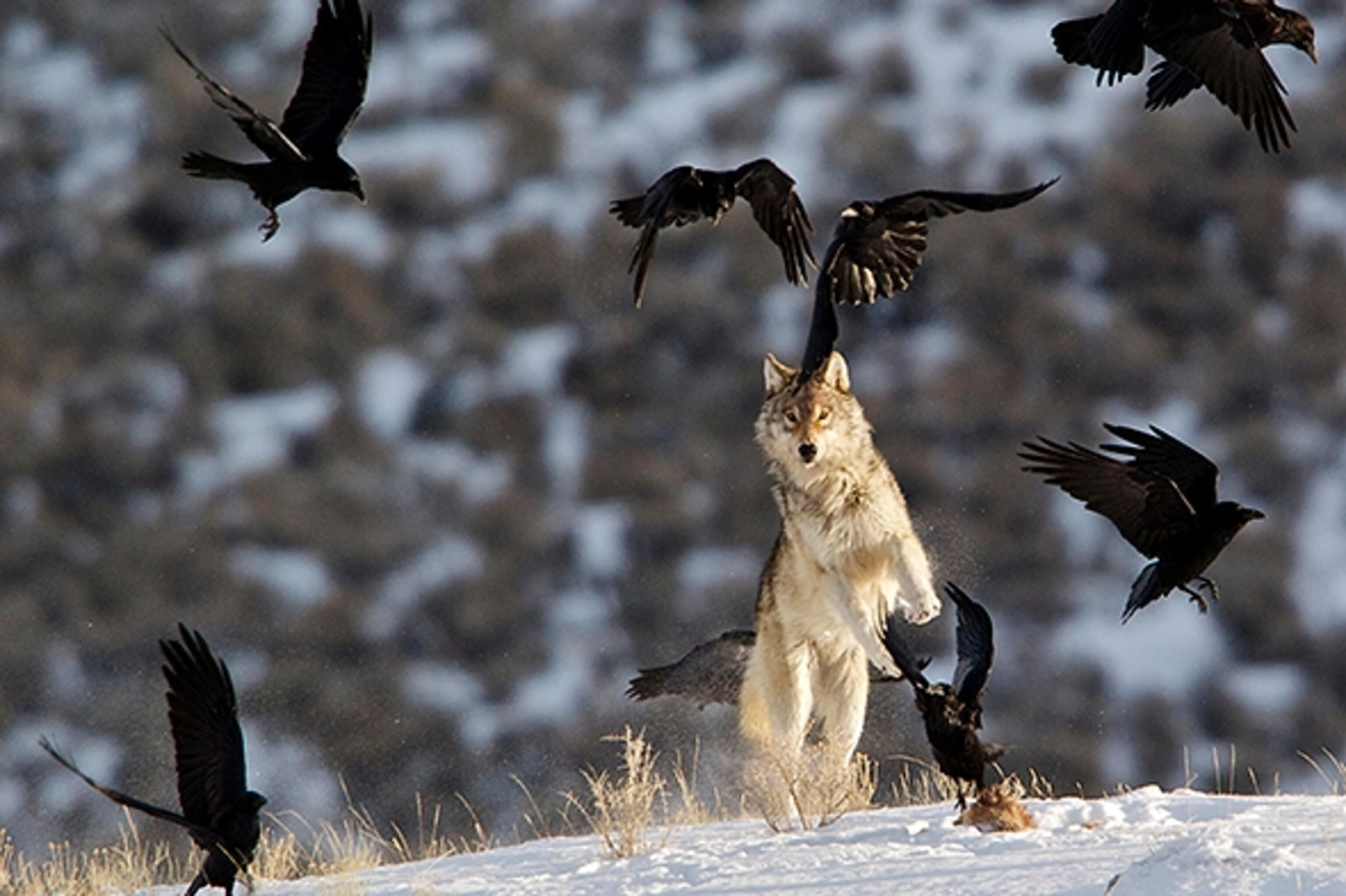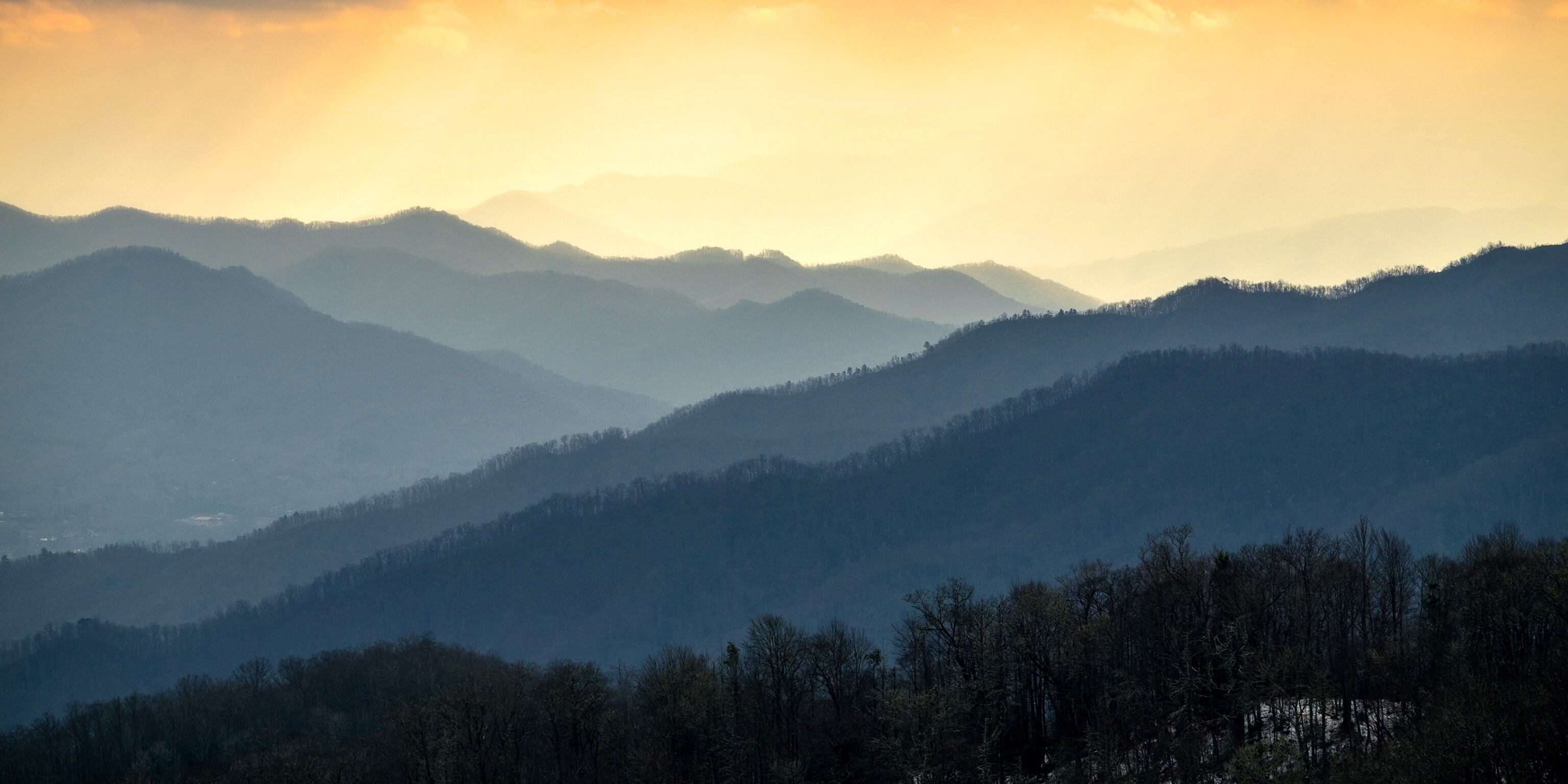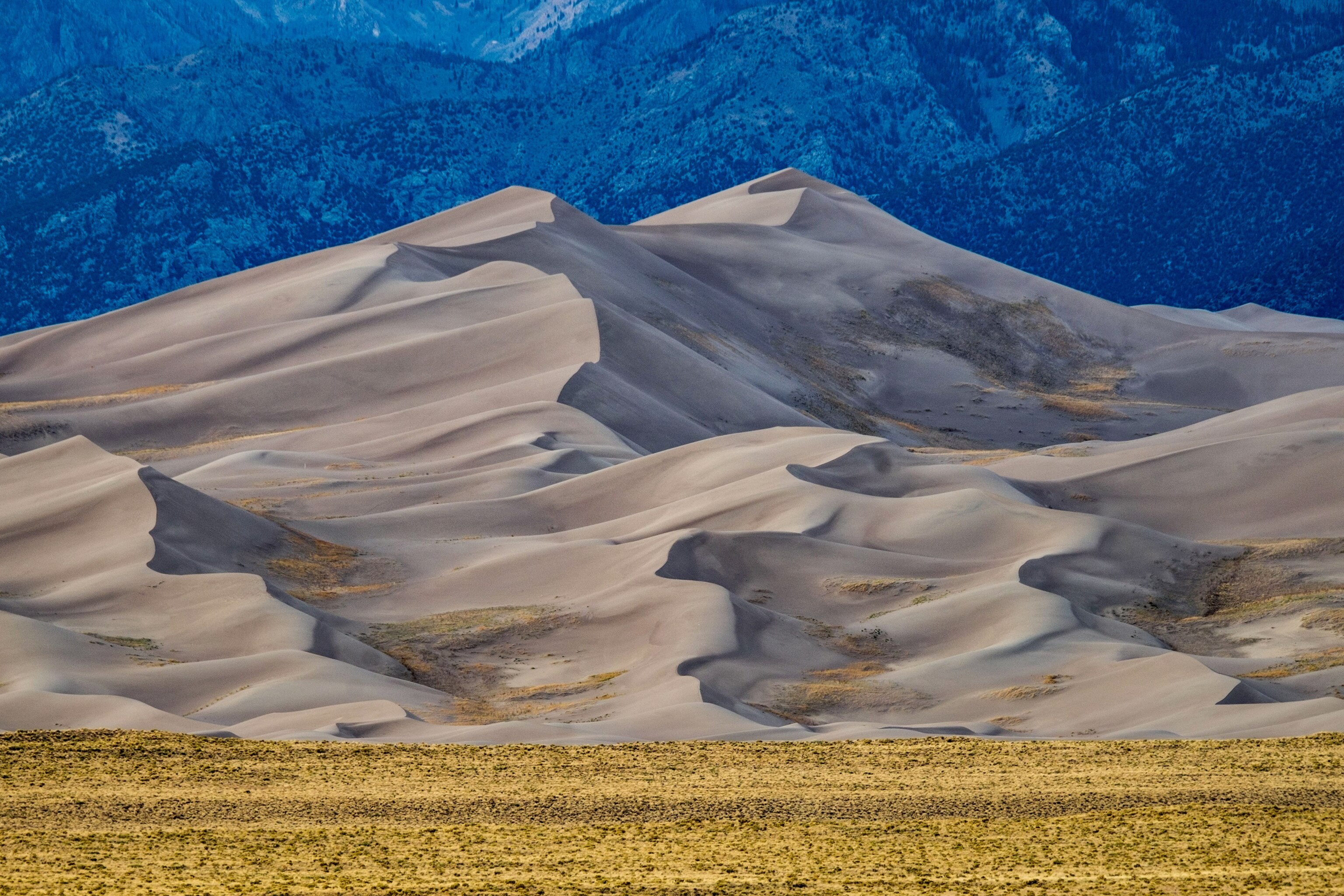
How to See the Wolves of Yellowstone
Winter weather means that curious travelers and avid shutterbugs have a chance to spot a wolf or three.
“Wolf by the river. Stop!” screamed Emily, a fellow traveler who sat across from me in the snow coach. Minutes earlier I had asked our driver if there was any chance we’d spot a wolf. “Quite frankly, I doubt it,” she replied. “Although Yellowstone is home to about 100 wolves, spread across 12-13 packs, they wander across 2.2 million acres,” she explained. Like a damp mist from the geysers, disappointment had seeped into the warm coach, weighing us down.
We were eight serious wildlife watchers who had made the trek to the park in December’s icy grip, determined to see wolves. Armed with binoculars and spotting scopes, we searched all morning in Lamar Valley—the best place to observe wolves—with no success.
Then, as the sun was getting low in the sky, we got lucky. There he was on the bank of the rushing Lamar River—a six-foot-long lone wolf shaking water from his tawny fur like a wet dog. We watched as the majestic, muscular male circled an immense elk carcass until he settled on a rib to chew.
He paused, raising his head to sniff the air, and I imagined, for one perfect moment, that his amber eyes met mine. Seeing a wolf—once poisoned and hunted to the brink of extinction in the continental United States—free and healthy was really cool.
If you’re looking for the rebounding carnivores, Yellowstone is a good place. And winter provides the best odds of seeing them.
In summer, wolves tend to stay in the woods, away from the hot sun, and blend into the landscape when they do venture out. But against the snow, romping pups and their parents stand out in stark relief.
Long, flat Lamar Valley has been called “America’s Serengeti” because it is home to a dizzying array of wildlife, including wolves, grizzlies, elk, bison, moose, and eagles. “Bison on the left, elk on the right,” was the rallying cry during our morning wildlife viewing session.
This was not always the case. In 1880, less than a decade after Yellowstone was established as America’s first national park, superintendent Philetus Norris observed that while wolves were once universally prevalent in the park, “the value of their hides and the easy slaughter with strychnine-poisoned carcasses of animals have nearly led to their extermination.”
In fact, wolves were absent from Yellowstone from 1926 until 1995 when 14 were captured in Western Canada and released within park bounds. Today, two decades after reintroduction efforts began, wolf numbers are stable. But the issue of wolf management continues to be a hot topic.
“The competition between wolves and ranchers [living around the park] can cause real and significant financial hardship for families who depend upon livestock for their living,” Carolyn Harwood, a resident instructor at the Yellowstone Association Institute, explained.
As Charlie, a Montana rancher sipping a beer at the bar at Chico Hot Springs Resort 30 miles from the park entrance, told me: “A little ‘woof’ in the park is OK. A lot of ‘woof’ killing cattle outside the park is not.”
Yet research shows that the reintroduction of wolves has affected Yellowstone ecosystems in complex ways. For instance, elk, whose population growth exploded in the absence of predators, overgrazed cottonwoods, willows, and other key plant species along park riverbeds. When the wolves returned, elk moved into valleys and gorges to avoid predation, allowing trees and bushes to regenerate. Beavers, in turn, experienced a resurgence, as did muskrats, otters, duck, fish, reptiles, and amphibians. There was a surge in songbirds due to increased nesting areas in willows.
As Carolyn explained, this cascading effect shows the apex predator theory at work. “Having wolves back in Yellowstone makes the park a wild, whole ecosystem again,” she said.
Unfortunately, wolves continue to suffer from an image problem, borne, at least in part, from their appearance as evil antagonists in fairy tales like Little Red Riding Hood and The Three Little Pigs. “And yet, there has never been a recorded instance of a healthy, wild wolf attacking a human in the USA,” Carolyn noted.
One of Yellowstone’s greatest winter assets is its lack of visitors. Cold weather means that curious travelers can experience moments of solitude at the park’s many geothermal attractions and that avid shutterbugs have a chance to capture snow-covered bison—or a wolf or three—framed by icicle-laden branches.
You can even experience Old Faithful alone. After dinner one evening, two friends and I bulked up in layers of down and fleece and took to the boardwalks leading to the park’s most famous geyser. At times we turned off our flashlights to take in the brilliance of the stars far from any source of light pollution. Suddenly, the reliable gusher began to hiss and puff. Witnessing the eruption in the still of night was haunting and majestic.
Know Before You Go:
During the winter season, Old Faithful Snow Lodge and Mammoth Hot Springs Hotel are the only accommodations available within park boundaries. Note: There is one plowed road from Mammoth Hot Springs to Lamar Valley that is open in the winter. Transportation elsewhere within the park is limited to snowmobiles and enclosed heated snow coaches.
Yellowstone National Park Lodges offers an array of seasonally appropriate multiday packages for travelers.
The Yellowstone Association, the park’s official nonprofit education partner, sponsors educational tours and field-based programs for individuals, families, and students, including “Wolf Week” courses every December and March that coincide with—and operate alongside—key park research efforts.
In Lamar Valley, you may encounter a snarl of SUVs and tripod-toting wildlife watchers. They’re well-organized, passionate, and happy to share their viewing scopes as well as their knowledge about specific wolves. Many share information on a website dedicated to their wolf sightings (there’s an annual fee to access).
If you are up for a physically challenging adventure, try cross-country skiing or snowshoeing on well-marked trails. I rented skis at the Old Faithful Snow Lodge, caught a lift on a snow coach to the Lone Star Geyser trailhead, then skied to the backcountry geyser.
Travel Tip: Put a hand-warmer in your pocket next to your camera or cell phone so the cold won’t zap the battery.
Marybeth Bond is a freelance writer who writes for National Geographic Traveler, National Geographic Books, and other publications in addition to updating her Gutsy Traveler blog. Follow her adventures in travel on Twitter @GutsyTraveler and on Instagram @MarybethBond.
You May Also Like
Go Further
Animals
- This ‘saber-toothed’ salmon wasn’t quite what we thoughtThis ‘saber-toothed’ salmon wasn’t quite what we thought
- Why this rhino-zebra friendship makes perfect senseWhy this rhino-zebra friendship makes perfect sense
- When did bioluminescence evolve? It’s older than we thought.When did bioluminescence evolve? It’s older than we thought.
- Soy, skim … spider. Are any of these technically milk?Soy, skim … spider. Are any of these technically milk?
- This pristine piece of the Amazon shows nature’s resilienceThis pristine piece of the Amazon shows nature’s resilience
Environment
- This pristine piece of the Amazon shows nature’s resilienceThis pristine piece of the Amazon shows nature’s resilience
- Listen to 30 years of climate change transformed into haunting musicListen to 30 years of climate change transformed into haunting music
- This ancient society tried to stop El Niño—with child sacrificeThis ancient society tried to stop El Niño—with child sacrifice
- U.S. plans to clean its drinking water. What does that mean?U.S. plans to clean its drinking water. What does that mean?
History & Culture
- Séances at the White House? Why these first ladies turned to the occultSéances at the White House? Why these first ladies turned to the occult
- Gambling is everywhere now. When is that a problem?Gambling is everywhere now. When is that a problem?
- Beauty is pain—at least it was in 17th-century SpainBeauty is pain—at least it was in 17th-century Spain
- The real spies who inspired ‘The Ministry of Ungentlemanly Warfare’The real spies who inspired ‘The Ministry of Ungentlemanly Warfare’
- Heard of Zoroastrianism? The religion still has fervent followersHeard of Zoroastrianism? The religion still has fervent followers
Science
- Here's how astronomers found one of the rarest phenomenons in spaceHere's how astronomers found one of the rarest phenomenons in space
- Not an extrovert or introvert? There’s a word for that.Not an extrovert or introvert? There’s a word for that.
- NASA has a plan to clean up space junk—but is going green enough?NASA has a plan to clean up space junk—but is going green enough?
- Soy, skim … spider. Are any of these technically milk?Soy, skim … spider. Are any of these technically milk?
- Can aspirin help protect against colorectal cancers?Can aspirin help protect against colorectal cancers?
Travel
- What it's like to hike the Camino del Mayab in MexicoWhat it's like to hike the Camino del Mayab in Mexico
- Is this small English town Yorkshire's culinary capital?Is this small English town Yorkshire's culinary capital?
- This chef is taking Indian cuisine in a bold new directionThis chef is taking Indian cuisine in a bold new direction
- Follow in the footsteps of Robin Hood in Sherwood ForestFollow in the footsteps of Robin Hood in Sherwood Forest

































































